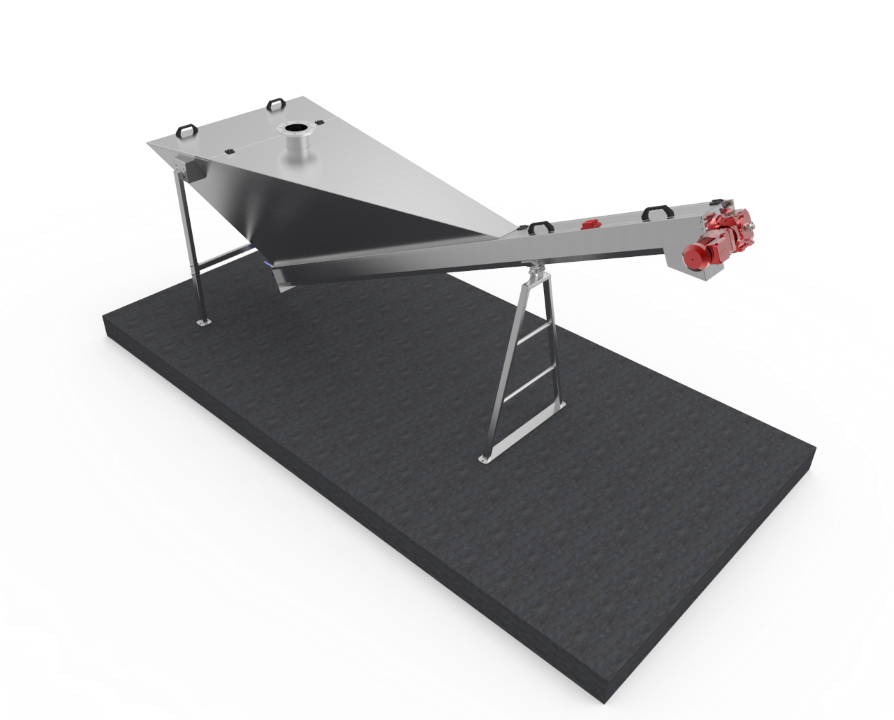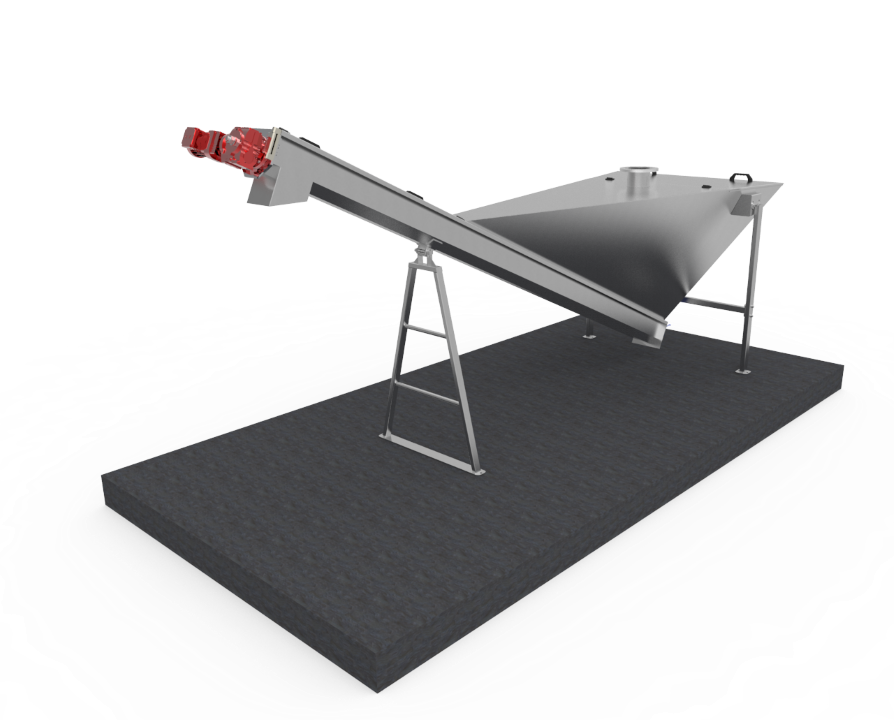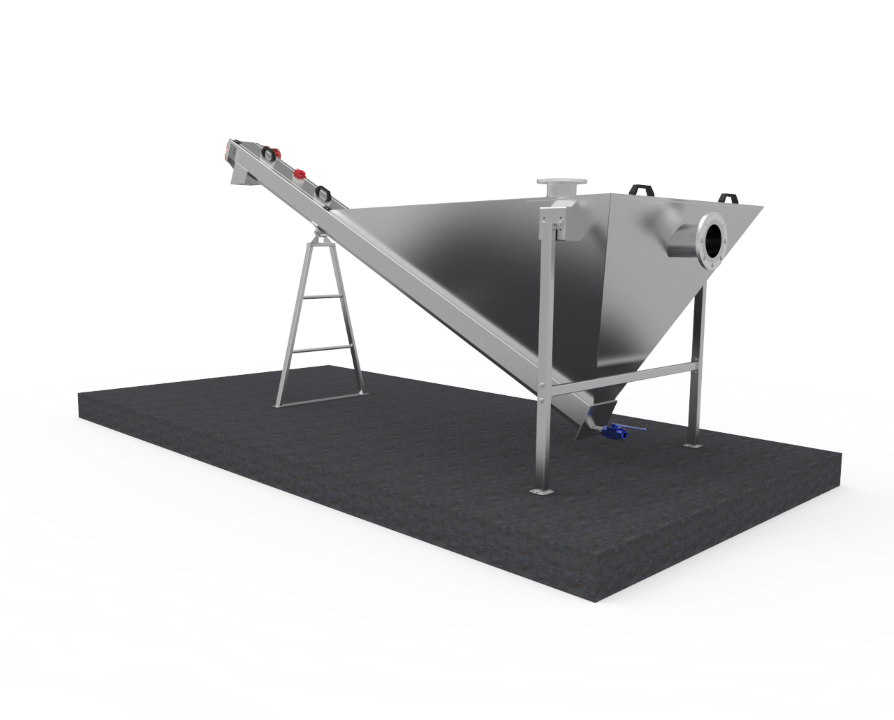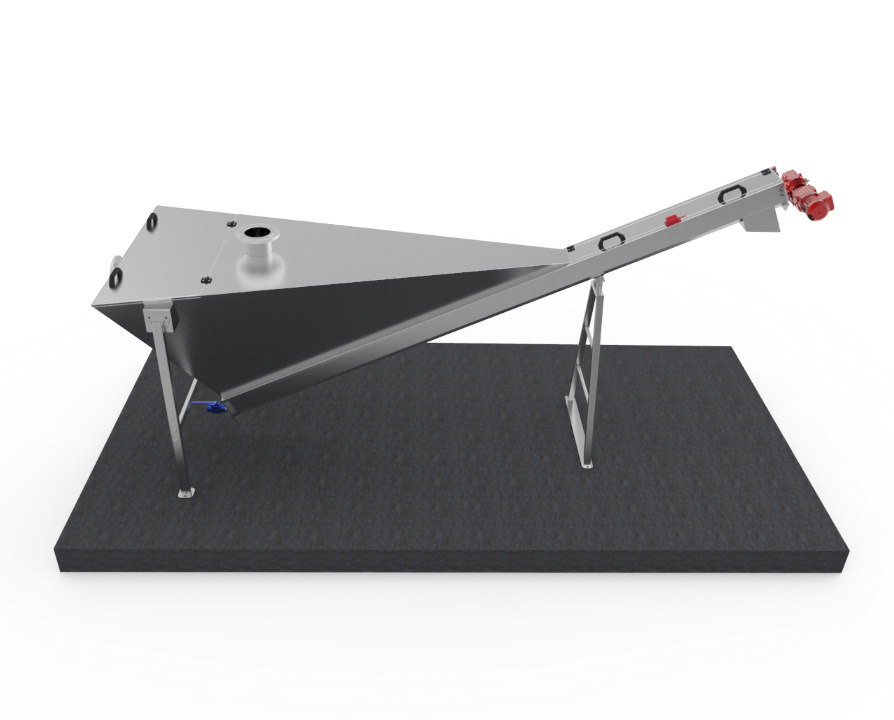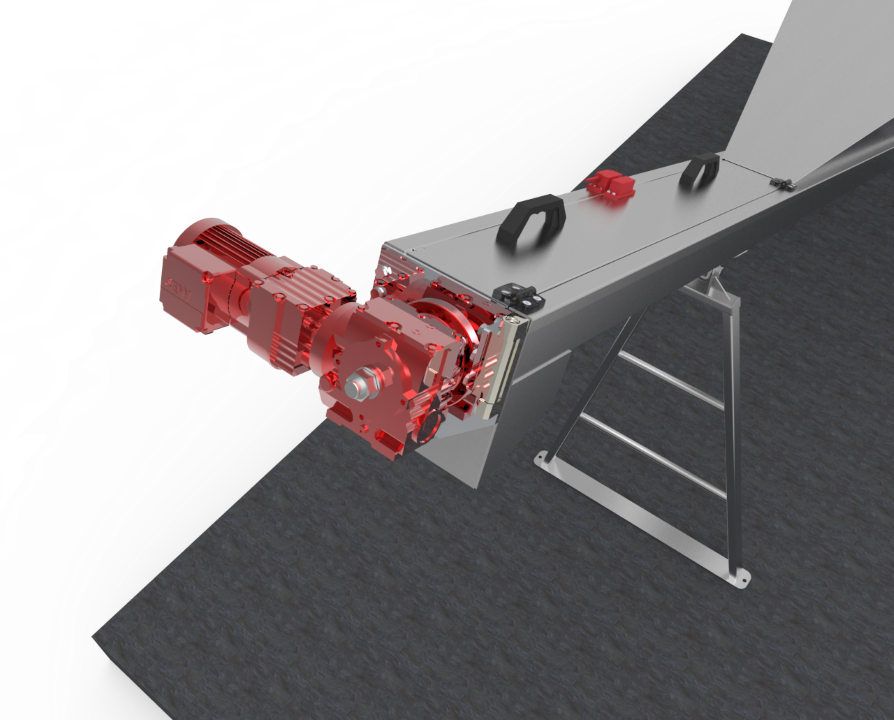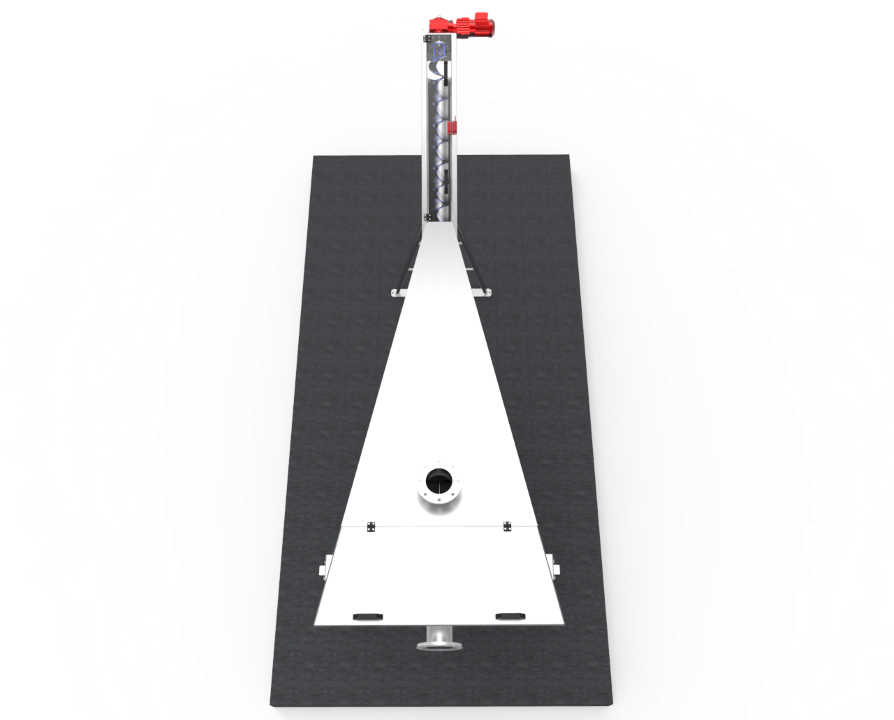Mono block grit extraction system
Metallic tank with a trapezoidal design and high capacity.
High retention and solids extraction capacity.
Extractable screw which means there is no need to empty the tank.
No submerged mechanisms or mobile parts.
Easy installation and connections.
Transportation channel with Hexagonal or circular section.
Protection lids designed drip free.
Opening security system integrated.
System with folding operational head. (easier maintenance)
Ball valve in draining tube (optional).
Washing system for eliminating organic matter.
DISIGN & APPLICATION:
The grit extractor is a piece of equipment which is installed in the second phase of pre-treatment and is used continually for extracting suspended solids from raw water, for example sand, gravel, etc. and for this process we have developed our SandTech®Nw210. We have introduced an innovative design which highlights improvements compared with conventional equipment as we have incorporated more efficient mechanical systems which reduce power consumption and maintenance time. This way we can avoid long periods of time with machinery shutdown, a low output and even breakdowns in posterior processes.
Our main goal is to separate wastewater by means of physical processes (with an endless screw grit extractor) and remove the largest amount of solids waste, for example small stones, sand, etc., which can generate the following problems later down the line in the other treatment processes
- Wear and tear of equipment due to the abrasive effect of the sand/grit.
- Grit accumulation at the bottom of the anaerobic digesters.
It is now easy to appreciate the importance of an efficient physical pre-treatment which is summed up by the following:
En nuestra amplia gama de productos pueden encontrar el equipo más adecuado a sus requerimientos técnicos en función del caudal de agua a tratar, desde 20m3/h a 130m3/h nuestros (diámetros de tornillo estándar Ø160mm/
In our wide range of products you can find the equipment which adjusts to your technical needs according to flow to be treated, from 20m3/h to 130m3/h. Our standard screw diameters are Ø160mm/ Ø215mm/ Ø280mm/ Ø315mm / Ø365mm / Ø420mm (larger diameters on demand).
The elimination percentage with our equipment is of 97% sand with a diameter of up to 0.15-0.2 mm.
The main components are: Transport channel / tank for decanting sand / entrance, exit and overflow tubes, deflecting tube on entrance for settling the water on entry / water drainage in the channel / anti wear & tear cuna / endless screw / screw driving axis / leaning supports or for fixing to civil works / protection lids in channel / tank inspection lid.
All components which are in direct contact with water (except the endless screw without axis) are manufactured in different quality stainless steel, following the PREN Corrosion (Pitting Resistance Equivalent Number) and according to our client’s requests. Once manufacturing is concluded we apply a pickling process by means of an acid bath. The endless screw can be manufactured in Carbon Steel ST.52 (UNE F-1515) or in Stainless Steel, AISI-304/316.
4 processes are carried out with this equipment:
Process 1: The water enters the entrance tube in the metallic tank, normally through the top and the water is settled. The water impacts against a deflector which breaks the water’s inertia and therefore avoids any turbulence which could move the sand and affect the decanting process.
Process 2: The sand decanting process whereby we recommend ≥5 minutes. This parameter is fundamental for a high output in the machine’s working.
Process 3: Once retaining time has finished, we proceed to the sand extraction process by means of an endless screw without axis, which installed has an inclination of between 20 to 25º at floor level. This transports the sand to the discharge mouth in the transporting channel.
Process 4: Clarified water exits a fixed weir where we can find installed the deposit’s exit tube.
Our equipment has a safety or protection system integrated in all the inspection lids, which is of utmost importance to be able to fulfil standards 2006/42/CE from European Parliament and the Consejo de 17 de mayo de 2006, relativa a las máquinas y por la que se modifica la Directiva 95/16/CE, establishes that all members of the European Union are obliged to adopt standards in order to ensure technical safety for the machinery.


